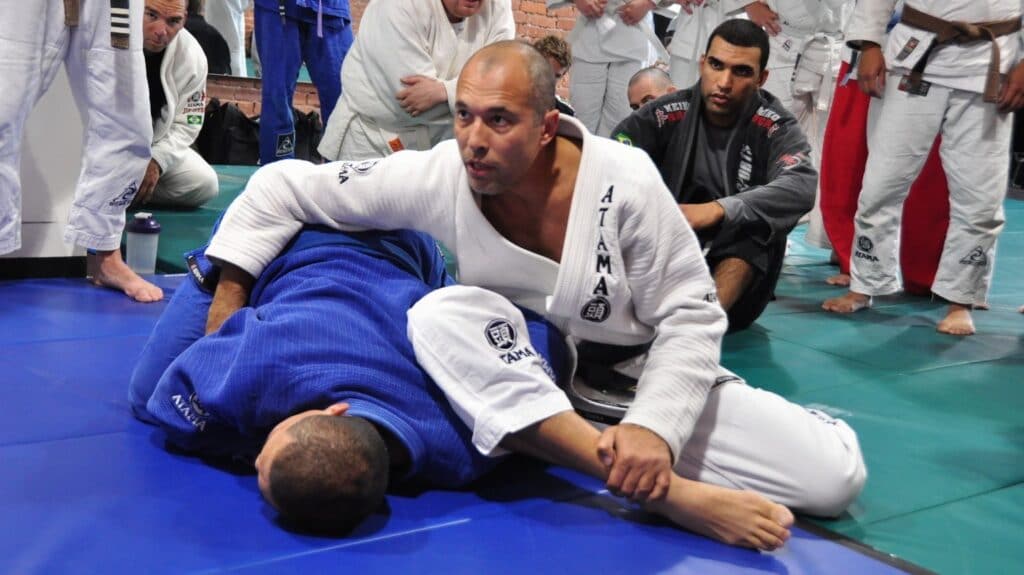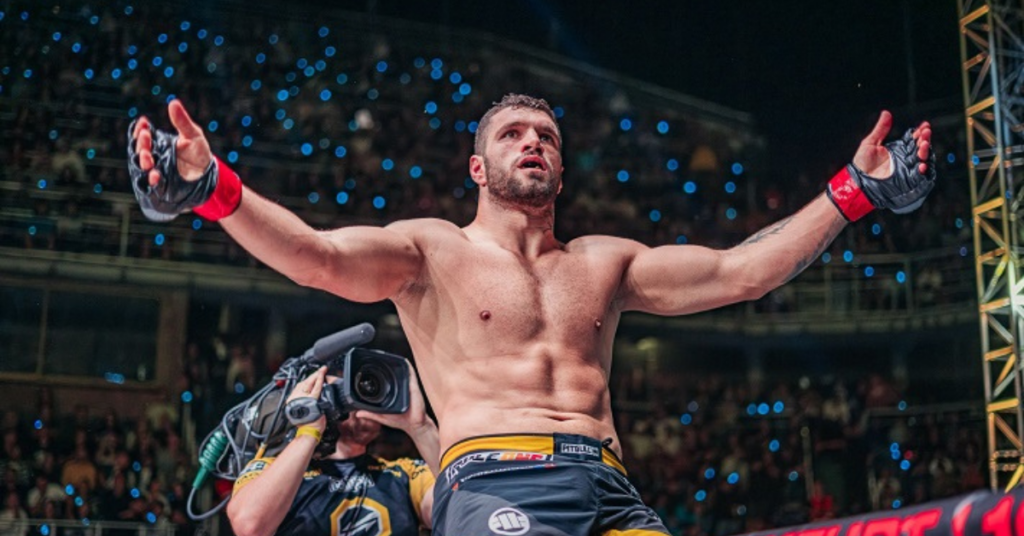BJJ 101: The Omoplata

Guest post by Evolve MMA, Asia’s premier championship brand for martial arts. It has the most number of World Champions on the planet. Named as the #1 ranked martial arts organization in Asia by CNN, Yahoo! Sports, FOX Sports, Evolve MMA is the top rated BJJ gym in Singapore.
The omoplata, which means scapula in Portuguese, is a highly effective Brazilian Jiu-Jitsu (BJJ submission). Also called the ashi sankaku garami (leg triangle entanglement) in judo and the coil lock in catch wrestling, the omoplata is a technique in which the attacking student’s legs and hips are used to extend an opponent’s shoulder joint past its normal range of motion. The lock applied to the shoulder is similar to the Kimura lock, but the legs are used in place of the figure-four grip. The omoplata, thought to have originated in either judo or catch wrestling, became popular in BJJ in the 1990s due to its successful use by Nino Schembri.
The most popular application of the omoplata is from the guard, and it is achieved by placing a leg under the opponent’s armpit and rotating 180 degrees, resulting in the leg moving over the opponent’s back and around his or her arm. The submission is completed by controlling the opponent’s body, often by placing an arm around his or her waist, and exerting pressure on the opponent’s shoulder by pushing his or her arm perpendicularly away from the back. In addition to being a great submission, the omoplata can be used as a set up for sweeps, armbars, chokes, and other techniques.
How To Perform The Omoplata
Omoplata From Closed Guard
- From the closed guard, break your opponent’s posture using your arms and legs.
- Shift your hips in the direction of the arm you want to attack.
- While continuing to control your opponent’s posture, swim your arm under your leg on the side you want to attack.
- Obtain a grip on your opponent’s collar.
- Open your legs and rotate your body 180 degrees, stretching your legs in front of you upon the completion of the rotation.
- Control your opponent by wrapping your arm around his or her waist.
- Point your knees towards your opponent.
- Raise your hips off the ground to finish the submission.
Omoplata From Triangle
Sometimes, an opponent will hide his arm to prevent you from finishing the triangle choke. This presents an opportunity to transition to the omoplata.
- From the triangle choke position, push your opponent’s head in the opposite direction of his hidden arm. This can be accomplished by:
- Pushing away with your hips to make space;
- Pushing with the palm of your hand;
- Placing your foot in front of your opponent’s face.
- If it isn’t already there, place your foot that is on the side of the hidden arm across your opponent’s face.
- Rotate your body 180 degrees.
- Control your opponent by wrapping your arm around his or her waist.
- Point your knees towards your opponent.
- Raise your hips off the ground to finish the submission.
Additional Tips
- Go For It – In order to perfect the omoplata, it is necessary to attempt it as often as possible during training. Don’t worry about the outcome. Rolling in class is a time to learn and make adjustments, so have confidence in your techniques and success will eventually come. Remember, practice makes perfect!
- Control Is Everything – When practicing your omoplata, be sure to focus on not letting your opponent roll out. The easiest way to do this, as discussed above, is to control the opponent’s waist. Without control, you will have trouble completing the omoplata (or any other submission) successfully. Remember, BJJ is ultimately the art of controlling your opponent, so be sure to always focus on control!
- Follow Your Opponent – If the opponent is able to roll out of your omoplata attempt, be sure to follow him or her and end up in top position. Getting accustomed to following your opponent after a failed omoplata attempt will ensure that you don’t end up in an inferior position, and this knowledge will allow you to attempt omoplatas without fear. Always have a backup plan!
- Attempt The Omoplata From Different Positions – Although only the standard omoplata and omoplata from triangle are described above, there are endless ways to achieve this submission. So, experiment with this technique and discover new positions from which to apply it. Not only is this a fun way to learn BJJ, but it will actually increase your overall understanding of the technique. Remember, the more option you have, the better!
- Trust The Submission – In BJJ, it’s important to trust your techniques. If you don’t believe in your techniques, you’ll be hesitant to apply them, and when you do attempt to apply them, your lack of confidence will often result in failure. So, when you’ve attempted an omoplata and your opponent is attempting to roll out of it, relax, maintain control, and continue to fight for the submission. Believe in yourself!
The omolata is only one of many submissions you’ll learn in BJJ. Practiced by students all over the world, BJJ is widely recognized as the most effective ground fighting art in existence. Not only does BJJ teach students how to apply submission holds and chokes, but it also emphasizes takedowns, real world self-defense techniques, and many other aspects of fighting.






